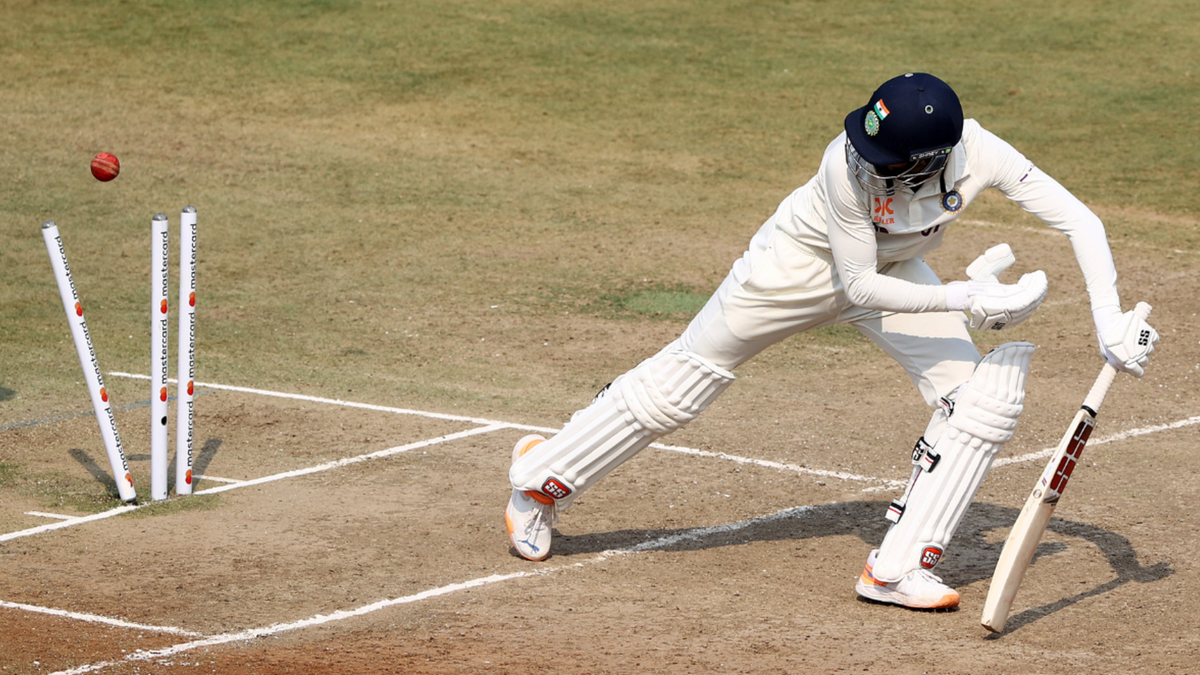
Indore, December 2019, India v Bangladesh: Quicks take 19 of the 25 wickets to fall. Mayank Agarwal makes 243 as India go close to 500. India win by an innings and 130 runs. The pitch is rated ‘very good’ by the ICC.
Subscribe to the Wisden Cricket YouTube channel for post-match analysis, player interviews, and much more.
Indore, March 2023, India v Australia: Spinners take 27 of the 31 wickets to fall. Only one India batter makes it past 30. Australia win by nine wickets. The pitch is rated ‘poor’ by the ICC.
Spitting turners, two-day finishes, seam bowling an afterthought – this is the way it once was in India, and the way it is now. But the greatest period in their Test history coincided with pitches that allowed for big totals and that rewarded skilful bowling of all disciplines. So what’s changed?
Let’s take in a brief history lesson. In 2015, South Africa turned up for the first home series of Virat Kohli’s Test captaincy. The Proteas had earned a reputation as the game’s grittiest tourists, their last series defeat on the road having come all the way back in 2006. In India, that came to an end. South Africa made a high score of 214 across four Tests. India fared little better, only once passing 300. India’s spinners claimed 61 of the 69 South African wickets to fall to bowlers, with R Ashwin and Ravindra Jadeja taking 54 wickets at an average of 11 between them.
The Nagpur pitch for the third Test, in which 652 runs were scored across all four innings, was rated ‘poor’. Kohli fumed in the aftermath at a perceived double standard. “Well, there have been three scores of under 50 runs in South Africa but I haven’t seen any sort of articles on that. Teams have been bundled out under 100 for about six times in South Africa,” he said. “The situation in our country is highlighted a bit too much and that’s a fact. Because the only thing we talk about is the pitch and when we were in South Africa, the only thing we talked about was how badly we played. We are criticised for our techniques but when visitors don’t play well, it’s always the wicket.” The subtext being: we’re going to make the most of home advantage just as other countries do.
However, the pitches in India did change after that. India whitewashed New Zealand, beat England 4-0 in a five-match series, and took down Bangladesh in a one-off Test. They crossed 300 in each of their first innings, and 400 in all but two. They were still reliant on their spinners – Ashwin and Jadeja claimed 95 of their 147 wickets – but big scores were still possible.
Then Australia came to visit, and things shifted again. The Pune pitch, having built up a reputation as one of the flattest in the land, was turned into a minefield. India were O’Keefe’d, the Aussie left-armer taking twin 6-35s as they were skittled for 105 and 107. For the first time since 2012, India had lost a Test at home. The surface was rated poor. But Kohli didn’t have an issue with it. “I don’t think it was any different from the turners that we played on in the past,” he said. “We just didn’t play good cricket.”
This is part of the issue here, separating fact from fiction, press conference gamesmanship from unguarded honesty. You have to glean what you can and infer the rest. And slowly, the pitches in India began to flatten out again. The second Test pitch was still tricky, with no side making it to 300 and India defending 187 comfortably. The third saw India respond to 451 with 603-9. In the fourth, both sides passed 300 in the first innings.
From then on, Indian pitches rewarded all aspects of cricket, with seamers, spinners and batters all able to cash in if they played well. The first Test after the Australia tour was dominated by quicks, with Sri Lanka drawing a rain-affected Test when 75-7 chasing 231, with India having been bowled out for 172 in the first innings. From that point in November 2017 until England’s visit in early 2021, India were bowled out just twice, for 474 by Afghanistan and for 367 by West Indies. They won nine Tests out of 10. In India, Umesh Yadav, Mohammed Shami and Ishant Sharma all averaged less than 20 with the ball (and less than Ashwin and Jadeja).
This period coincided with India’s growing competitiveness away from home, culminating with a 2-1 series win in Australia. Even with their opponents deprived of Steve Smith and David Warner, it confirmed India’s place as the best side in the world, and gave Kohli a statement victory after close defeats in South Africa and England. India had built up a group of quicks to compare to any in the world, and their home tracks had plenty to do with it.
Since then, fortunes have taken another turn. India’s total of exactly 400 in the first Australia Test was their second-biggest home total since 2019. Spin has dominated both bat and seam. There was a two-day Test against England, while the current series against Australia is yet to see a fourth day.
There are three things at play here, two on the surface, and one underlying. The first is, at the start of this stretch, India lost a home Test match. England turned up fresh off a whitewash over Sri Lanka. Joe Root, in prime form, racked up a double hundred on a flat pitch. Dom Bess winkled out four wickets. And James Anderson turned on the reverse-swing pyrotechnics on the last day.
It was the kind of performance India put in routinely, but this time it came against them. It remains their only home defeat in the last decade on a surface not rated ‘poor’.
This, it seems, spooked India, and for the rest of the series the spinners held sway. After making 578 in the first innings of the series, England had a top score of 205 in their next seven goes. India’s spinners claimed 67 of the 80 wickets. India had backed themselves to out-bat and outbowl other sides on flat pitches. After that first Test, it seemed they could no longer be confident of doing so, and so they elected to outspin them instead.
The second factor is the World Test Championship. New Zealand reaching a draw nine wickets down at Kanpur to kick off the 2021-23 cycle might have been a less dramatic result than England’s Chennai shellacking, but it has been just as influential. With draws worth a third as many points as a win, results are at a premium, and surfaces have followed suit.
“There is a huge premium on results,” Dravid said before the fourth Test. “You draw a game like Kanpur against New Zealand, where you take nine wickets in the second innings, you draw that game and that sets you back, in a home game.
“Every team is getting results at home or are putting in really good performances at home, so there is a premium on results. You get four points for a draw and you get 12 for a win, so there is a premium on that, there’s no question about it.”
The underlying factor, and the thing that makes what they do next hard to work out, is that India are not as good as they once were. Looking back all the way to Kohli’s first series as captain, India have played on good batting tracks against teams they can back themselves to outplay, and on spinning tracks against the rest – South Africa in 2015, Australia in 2017, England in 2021, and Australia in 2023. Now, the former category might be shrinking.
Kohli’s struggles are much discussed, as are those of KL Rahul. Mayank Agarwal, a significant factor in their home dominance, has fallen away, as has Ajinkya Rahane. Rahane has argued it’s the home surfaces that have led to his drop in performances, but really the causation is the other way around. And in the bowling department, Bumrah is now injured more often than not. Ishant has likely played his last Test. Umesh is 35 and Shami 32. Ashwin is 36 and Jadeja is 34. Mohammed Siraj apart, it’s not clear who will be in India’s bowling attack in three years’ time.
The pitch for the Ahmedabad Test suggests a return to the good pitches of the 2017-2019 period, and India should hold firm even if they don’t instantly resume their past dominance. India’s surfaces have been inextricably linked to their performances, and as their greatest era fades, it’s the pitches that reward all cricketers that will allow the next one to be founded.
The World Test Championship final – if they get there, and they still should – could mark a clean break, when the likes of Shubman Gill and Yashasvi Jaiswal can establish themselves as the rightful heirs to the thrones of Kohli and Rohit, and the new generation of quicks can be unearthed.
It might take time, but if India can establish another great side, it will be worth it.








